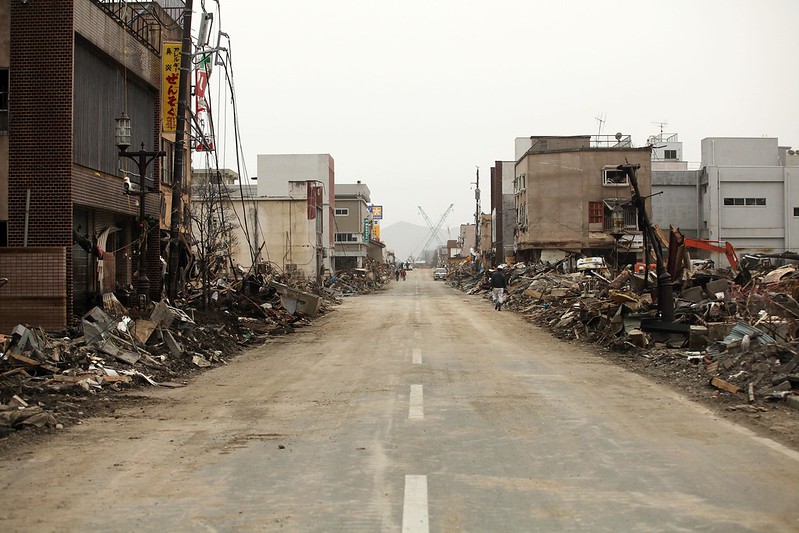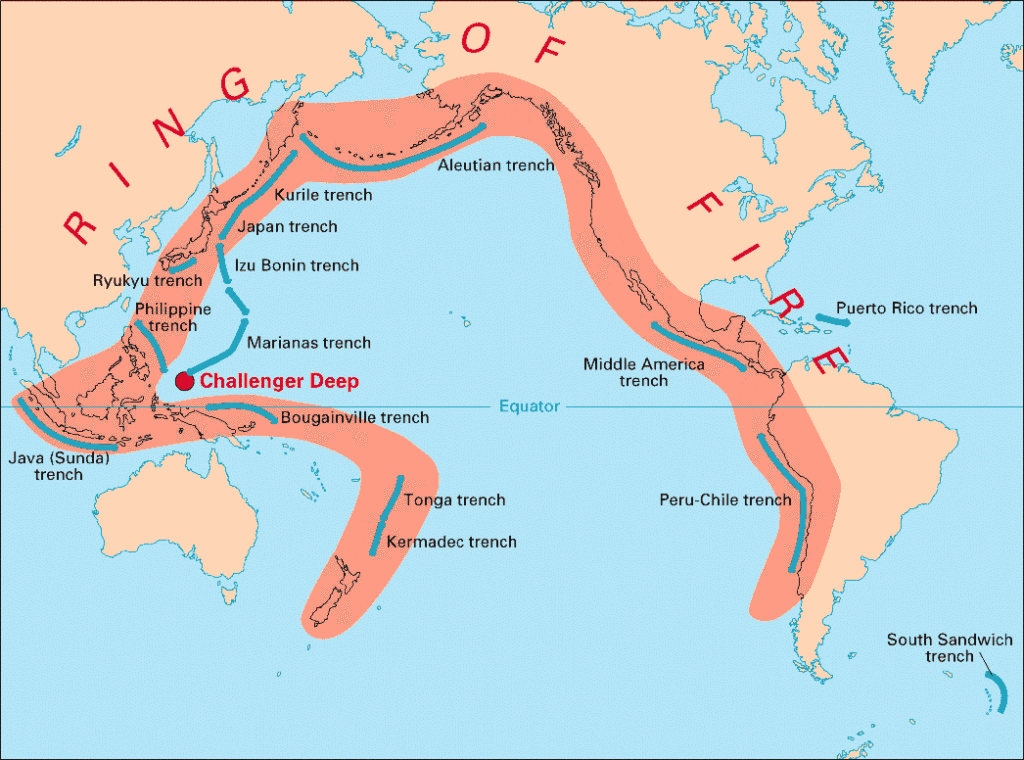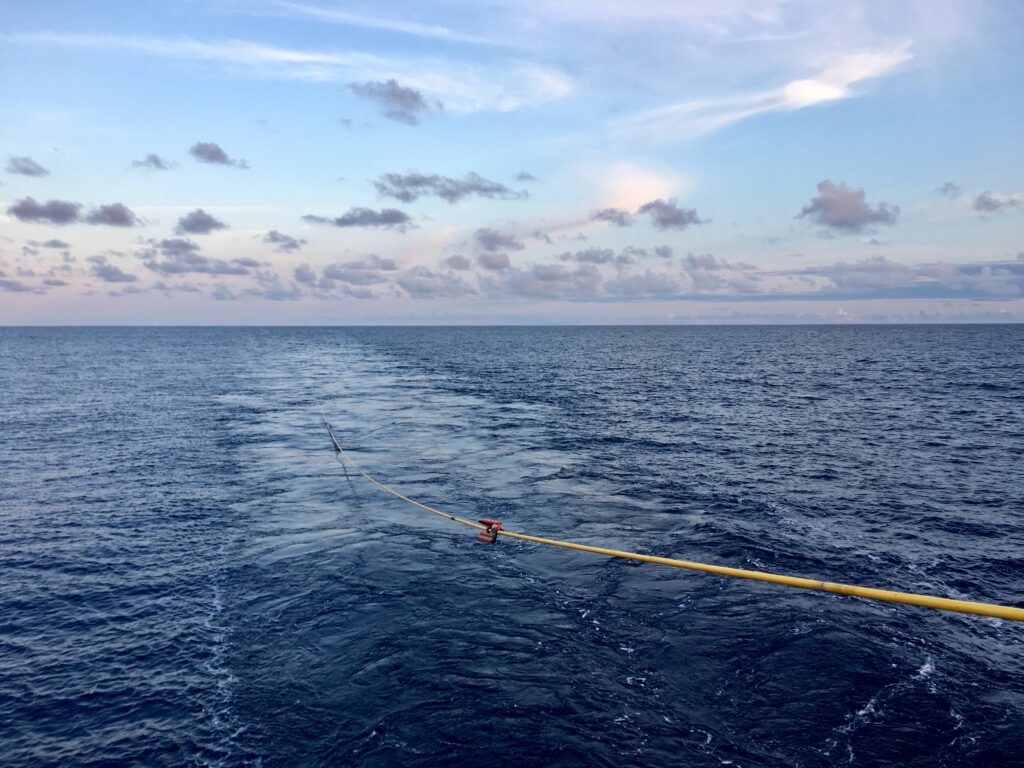
Slow slip earthquakes, a type of slow motion tremor, have been detected at many of the world’s earthquake hotspots, including those found around the Pacific Ring of Fire, but it is unclear how they are connected to the damaging quakes that occur there. Scientists at The University of Texas at Austin have now revealed the earthquakes’ inner workings using seismic CT scans and supercomputers to examine a region off the coast of New Zealand known to produce them.
The insights will help scientists pinpoint why tectonic energy at subduction zones such as New Zealand’s Hikurangi subduction zone, a seismically active region where the Pacific tectonic plate dives — or subducts — beneath the country’s North Island, is sometimes released gently as slow slip, and other times as devastating, high-magnitude earthquakes.

The research was recently published in the journal Nature Geoscience as part of a special edition focused on subduction zones.
“Subduction zones are the biggest earthquake and tsunami factories on the planet,” said co-author Laura Wallace, a research scientist at UT Austin’s Institute for Geophysics (UTIG) and GNS Science in New Zealand. “With more research like this, we can really begin to understand the origin of different types of [earthquake] behavior at subduction zones.”
The research used novel image processing techniques and computer modelling to test several proposed mechanisms about how slow slip earthquakes unfold, revealing the ones that worked best.
The study’s lead author, Adrien Arnulf, a UTIG research scientist, said that this line of research is important because understanding where and when a large subduction zone earthquake could strike can happen only by first solving the mystery of slow slip.
“If you ignore slow slip, you will miscalculate how much energy is stored and released as tectonic plates move around the planet,” he said.
Scientists know that slow slip events are an important part of the earthquake cycle because they occur in similar places and can release as much pent-up tectonic energy as a high magnitude earthquake, but without causing sudden seismic shaking. In fact, the events are so slow, unfolding over the course of weeks, that they escaped detection until only about 20 years ago.
New Zealand’s Hikurangi subduction zone is an ideal site to study slow slip quakes because they occur at depths shallow enough to be imaged at high resolution, either by listening to the internal rumblings of the Earth, or by sending artificial seismic waves into the subsurface and recording the echo.
Turning seismic data into a detailed image is a laborious task but by using similar techniques to those used in medical imaging, geoscientists are able to pick apart the length, shape, and strength of the seismic echo to figure out what’s going on underground.

In the current study, Arnulf was able to extract even more information by programming algorithms on Lonestar5, a supercomputer at the Texas Advanced Computing Center, to look for patterns in the data. The results told Arnulf how weak the fault had become and where pressure was being felt within the Earth’s joints.
He worked with UT Jackson School of Geosciences graduate student, James Biemiller, who used Arnulf’s parameters in a detailed simulation he had developed for modeling how faults move.
The simulation showed tectonic forces building in the crust then releasing through a series of slow motion tremors, just like slow slip earthquakes detected at Hikurangi over the past two decades.
According to the scientists, the real success of the research was not that the model worked but that it showed them where the gaps are in the physics.
“We don’t necessarily have the nail-in-the-coffin of how exactly shallow slow slip occurs,” said Biemiller, “but we tested one of the standard nails (rate-state friction) and found it doesn’t work as well as you’d expect. That means we can probably assume there are other processes involved in modulating slow slip, like cycles of fluid pressurization and release.”
Finding those other processes is exactly what the team hope their method will help facilitate.
The study’s seismic data was provided by GNS Science and the New Zealand Ministry of Economic Development. The research was funded by UTIG and an MBIE Endeavour fund for GNS Science. UTIG is a unit of the Jackson School of Geosciences.
For more information, contact: Anton Caputo, Jackson School of Geosciences, 512-232-9623; Constantino Panagopulos, University of Texas Institute for Geophysics, 512-574-7376.
